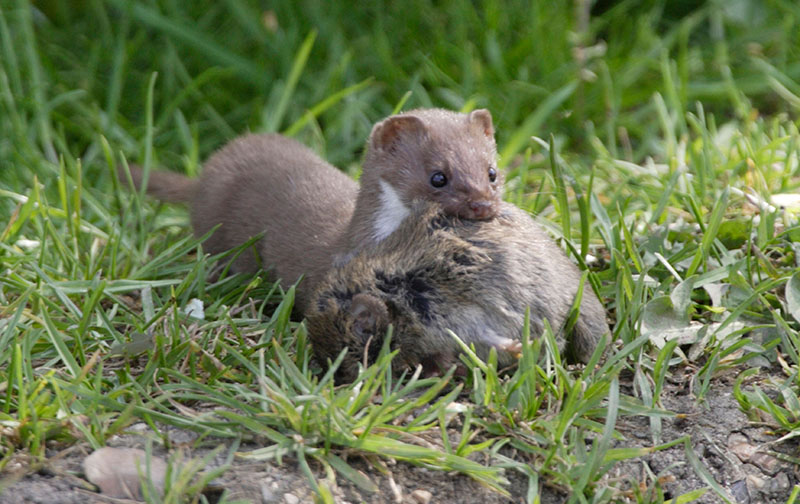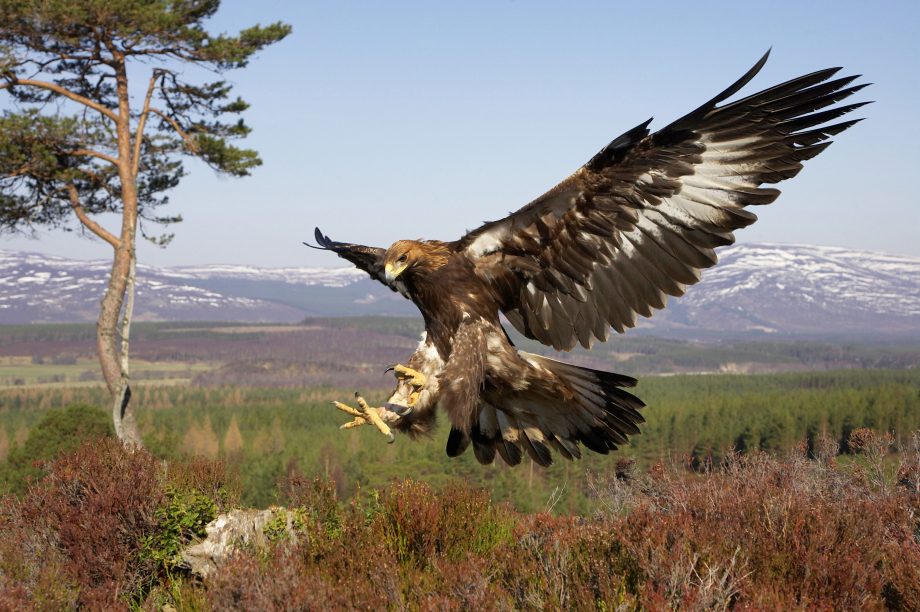One moment adorable furry creatures, the next moment ruthless killed, David Profumo takes a look at the weasel, one of Britain's smallest yet most fascinating predators.
The weasel is the world’s tiniest carnivore
Nimble, elegant and lithe, the common weasel is this country’s, and the world’s, smallest carnivore. The male of the species is usually around 11 inches long, but so streamlined that it can squeeze through a space the diameter of a wedding ring.
Weasels are constantly hunting
There’s nothing small-scale about their appetite. With a rapid metabolism and frantic heartbeat, the weasel is always on the qui vive and requires at least five meals a day – a mature male may eat a third of his body weight daily. They forage around the clock, having acute night vision and a distinctive green eyeshine.
They are ruthless killers
Their a sneaky, villainous reputation has seen them typecast (perhaps unfairly) as sneaky, malevolent and bloodthirsty killers – think of the weasels in Wind in the Willows, for example, or the connotations of the Shakespearian phrase ‘weasel words’. But the manner in which they dispatch their prey doesn’t exactly help their cause: like big cats, weasels kill their victims with a bite to the base of the skull, and then feast on the contents. Mouse brain is their favourite food.
There are hundreds of thousands of them about
Mustela nivalis vulgaris is a sub-species of the predatory family that includes polecats, pine martens and otters, and is widespread across the British Isles, although absent from Ireland. Populations are hard to estimate, but we probably have about 450,000. They’re adaptable, furtive creatures that range from mountain slopes to sand dunes, favouring scrubby cover, stone walls and hay ricks.

They change colour through the year
The weasel – also known variously as long mouse, mertrik or rezzil – is like a smaller edition of its cousin the stoat, but with a shorter tail that sports no black tip. With a back of chestnut brown and a pale belly, it’s also a turncoat like the stoat, with a pelage that becomes ermine white during winter.
They’re brilliantly adapted to their work
The weasel’s long neck enables carried prey to be kept away from its short, busy legs; it often proceeds in humpbacked bounds or stalks small rodents in fits and starts like a lethal game of grandmother’s footsteps. Occasionally, a weasel will stand on its hind legs to scan the terrain.
They’re not afraid to pick on prey their own size – or bigger
Their shape is ideally suited to the pursuit of wood mice and bank voles down their own tunnels, but they don’t stop there. They’ll happily take rabbits twice their own size and will happily raid a hen house.
That penchant for eggs and chicks has made weasels the declared enemy of preservers of game birds; other farmers consider them friends, however, as they are a dedicated scourge of rats.

A weasel with a rat it has just killed moving it to its own nest.
They perform a ‘dance of death’
It’s claimed that weasels perform a peculiar dance of death – a ‘weasel waltz’ designed to hypnotise bewildered prey. This behaviour isn’t showboating, however: it’s most likely caused by the squirming presence of a worm-like parasite that lodges behind their eyes and causes skrjabingylosis, putting infuriating pressure on the brain.
They’re totally harmless to people
A myth persists that weasels hunt in packs and will even attack humans – one farm labourer reportedly had to ward off a swarm with his cart whip. In fact, they’re solitary assassins, although sometimes mothers chaperone their offspring on training forays.

They’re not exactly the what you’d call romantic…
In February, the female comes into heat and the testes of the male grow distended. There is no proper pair bonding. After peremptory courtship (the male biting his lady- love’s neck), vigorous bouts of coitus ensue, intromission being aided by the male’s baculum (penis bone). He plays no part in parental care and, indeed, the female may entertain further paramours during oestrus.
…but they were once thought to have indulged in aural sex
It used to be believed that weasels indulged in aural sex. ‘They do not couple in their hinder parts,’ asserted the genial Edward Topsell in 1658, ‘but at their ears, and bring forth their young at their mouth.’ Plutarch took this as a metaphor for the transmission of human wisdom. The myth derives from Ovid’s Metamorphoses, wherein Lucina (goddess of childbirth) turns a servant girl into a weasel for scoffing at her. This may account for their presence being deemed inauspicious on the eve of a wedding, in particular, although superstitions abound that it is a harbinger of ill-fortune.

They steal their victims homes, then make them their own
Weasels don’t burrow, but make their dens in the tunnels of the vanquished, lined with their victims’ fur. The first litters of four to six kits appear in April and, as they become sexually mature at three months, these may themselves breed in the summer. It’s been calculated that a single female could thus theoretically be responsible for the birth of more than 500 weasels in one year. However, mortality is high – the long mouse is predated by foxes and owls and, in the wild, few seem to survive more than one year.
And finally, where does ‘Pop goes the Weasel’ come from? Not weasels
That puzzling nursery rhyme ‘pop goes the weasel’ isn’t actually about a weasel – it’s believed to be about a coat. The theory goes that it alludes to the pawning (pop) of a coat (weasel and stoat, in rhyming slang) to raise cash for the Eagle tavern. Another theory goes that it has its origins in the repetitive ‘pop’ of the weaver’s ‘weasel’, a wheel that measured off yarn.

Britain’s birds of prey: The Country Life guide to all of the UK’s raptors
Raptors’ supersonic vision, effortless aerial acrobatics and ruthless hunting instinct make them the undisputed masters of the skies, but can

Collective nouns for birds: Why we call it a murder of crows, murmuration of starlings and a conspiracy of ravens
We celebrate our favourite collective nouns for birds, from the weird and the wonderful to the most curious.

The six types of owl you’ll find in Britain
Gamekeeper Simon Lester offers his guide to these mesmerising creatures, from the pocket-sized Little Owl to the fearsome Eagle Owl

Dormice: Britain’s sleepiest, and most charming little creatures
David Profumo takes a look at the lovely little dormouse – a delightful little creature which spends 75 per cent

Hibernation: The animal phenomenon that might just save the human race
For centuries, naturalists pondered how a warm-blooded creature could descend into a near-death winter state and surface unscathed the following




